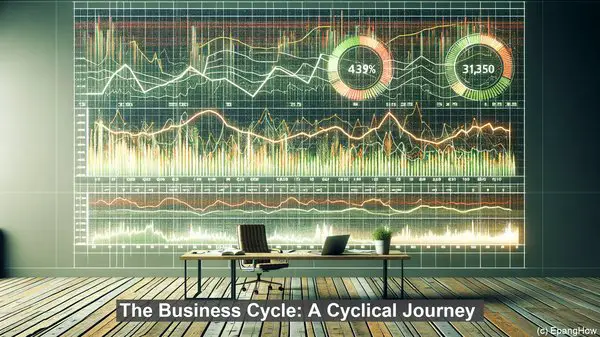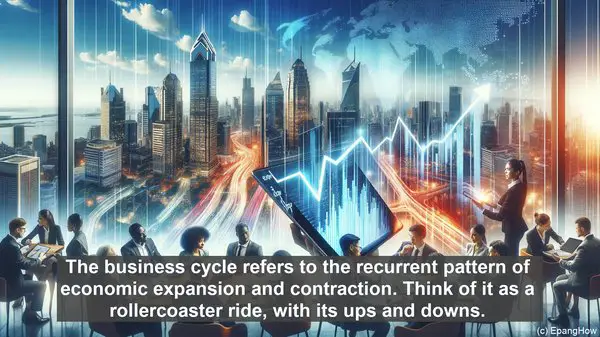Introduction: The Dynamic World of Economics
Hello everyone! Welcome to our channel, where we explore the fascinating realm of economics. Today, we’ll be focusing on two key concepts that shape the economic landscape: the business cycle and economic growth. While these terms are often used interchangeably, they actually represent distinct phenomena. So, let’s dive in!

The Business Cycle: A Cyclical Journey
The business cycle refers to the recurrent pattern of economic expansion and contraction. Think of it as a rollercoaster ride, with its ups and downs. At its peak, we have the ‘boom’ phase, characterized by robust economic activity, high employment rates, and increased consumer spending. However, this exuberance is often followed by a downturn, known as a recession. During this phase, there’s a decline in economic output, rising unemployment, and reduced consumer spending. This cyclical pattern has been observed throughout history, with each phase influencing various aspects of the economy.

Economic Growth: The Long-Term Trajectory
While the business cycle captures short-term fluctuations, economic growth focuses on the long-term trajectory of an economy. It’s like the overall direction the rollercoaster is heading. Economic growth is typically measured by changes in a nation’s Gross Domestic Product (GDP) over time. A growing GDP signifies an expanding economy, with increased production, higher incomes, and improved living standards. Policies that promote investment, innovation, and productivity often play a crucial role in fostering sustained economic growth.
Interplay and Indicators: How They Connect
Although the business cycle and economic growth are distinct, they are interconnected. For instance, during an economic expansion, we often witness a surge in economic growth, as businesses thrive and employment opportunities abound. Conversely, during a recession, economic growth stagnates or even contracts. Various economic indicators, such as unemployment rates, inflation levels, and consumer spending, provide insights into both the business cycle and economic growth. By analyzing these indicators, policymakers and economists can gauge the health of an economy and devise appropriate strategies.
